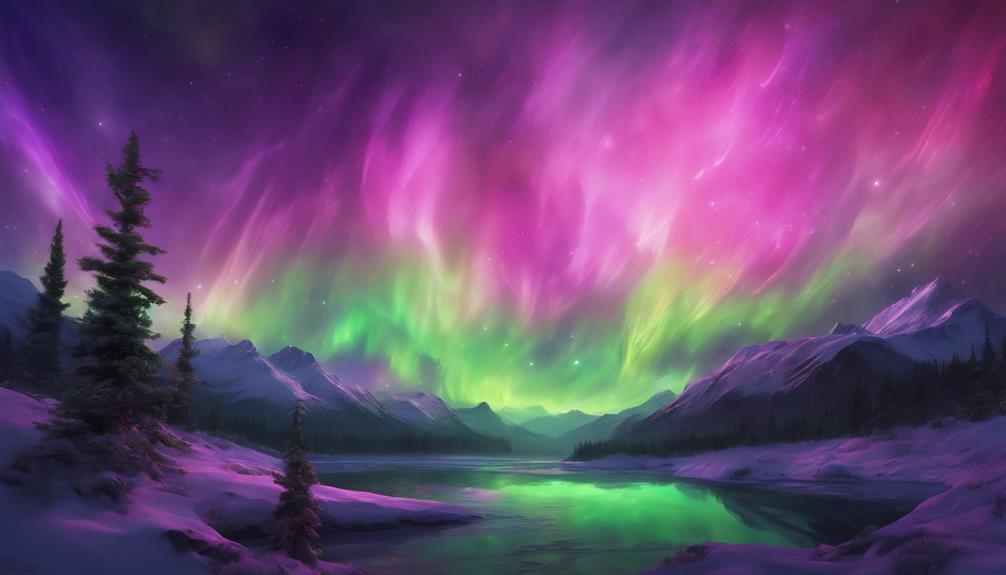The Northern Lights, or aurora borealis, stand as a testament to the intricate dance between solar winds and Earth's magnetic field. These stunning displays of light have puzzled and intrigued scientists for generations, offering a glimpse into the complex interactions of our planet with the Sun. Understanding the mechanics behind this natural wonder not only sheds light on Earth's magnetic shield but also piques curiosity about the broader cosmic forces at play. The phenomenon of the Northern Lights transcends mere beauty, offering a window into the cosmic ballet that unfolds beyond our atmosphere.
Key Takeaways
- Northern Lights result from solar wind interacting with Earth's magnetic field and atmosphere gases.
- Auroral colors vary due to interactions between solar particles and atmospheric gases like oxygen and nitrogen.
- Planetary auroras are observed on Jupiter, Saturn, Uranus, Neptune, and Mars due to differing atmospheric and magnetic conditions.
- Solar activity, including the 11-year solar cycle and solar flares, influences the intensity and visibility of the Northern Lights.
Origin of the Aurora Borealis
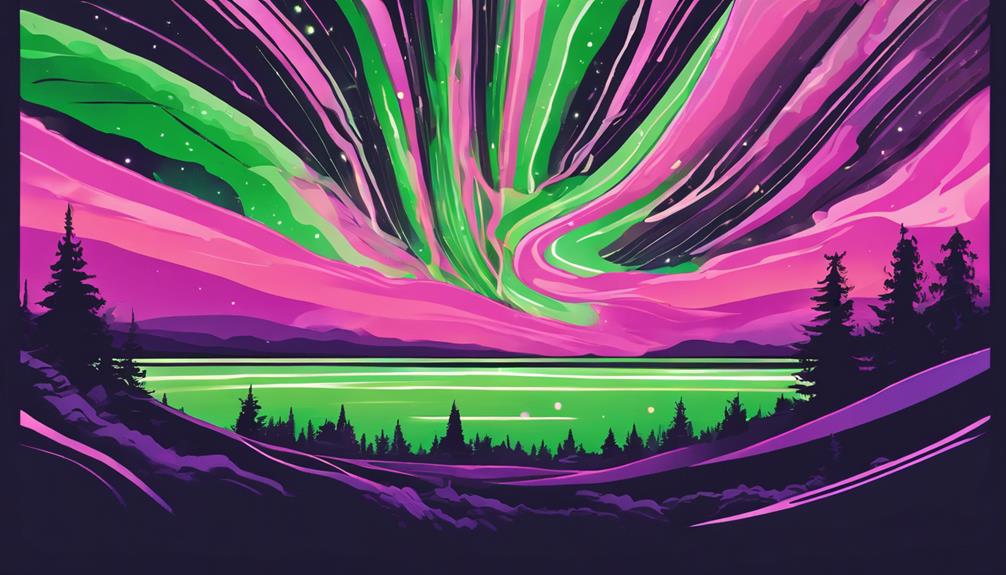
The origin of the Aurora Borealis can be traced back to the intricate interplay between charged solar particles, Earth's magnetic field, and the gases in the ionosphere. When the Sun emits solar wind particles, they travel towards Earth. Upon reaching Earth's magnetic field, these charged particles interact with it, causing some to be trapped and directed towards the poles. As these charged particles move along the magnetic field lines towards the poles, they collide with gases in the Earth's ionosphere, particularly oxygen and nitrogen.
These collisions excite the atoms and molecules in the atmosphere, causing them to release photons of light. The different gases emit different colors, resulting in the vibrant hues of the aurora borealis. The precise colors observed depend on the type of gas involved in the collision and the altitude at which the collision occurs. This natural phenomenon showcases the fascinating connection between solar activity, Earth's magnetic field, and the upper atmosphere, culminating in the enchanting spectacle of the aurora borealis.
Formation of Northern Lights
The formation of the Northern Lights is a complex process that involves the interaction of charged particles from the sun with Earth's ionosphere. Earth's magnetic field plays a crucial role in redirecting these particles towards the poles, where they collide with gases in the atmosphere. This collision results in the spectacular displays of light known as the auroras.
Light Particle Collisions
In the process of forming the mesmerizing phenomenon known as the Northern Lights, light particle collisions play a critical role. These collisions between charged particles from the sun and Earth's magnetic field energize particles in the upper atmosphere, resulting in the emission of colorful light. The interaction of solar wind with Earth's magnetic field causes the charged particles to follow magnetic field lines towards the poles. When these particles collide with specific gases in the upper atmosphere, they create the captivating display known as the aurora. The distinctive colors of the Northern Lights are a direct result of the specific gases in the atmosphere being excited by the incoming charged particles.
Earth's Magnetic Field
Light particle collisions in the upper atmosphere, as a result of interactions between charged particles from the sun and Earth's magnetic field, are instrumental in initiating the formation of the Northern Lights. When charged particles from the sun reach Earth, the planet's magnetic field redirects them towards the poles. As these particles collide with gases in the upper atmosphere, particularly oxygen and nitrogen, they create the mesmerizing auroras. The magnetic field of Earth plays a crucial role in this process by guiding and accelerating these charged particles along its field lines. The stretching and snapping back of these magnetic field lines launch the particles towards the poles, where they interact with atmospheric gases, resulting in the stunning light displays that characterize the Northern Lights phenomenon. Understanding the intricate relationship between solar particles and Earth's magnetic field is fundamental in unraveling the mysteries of the auroras.
Causes of Auroral Colors
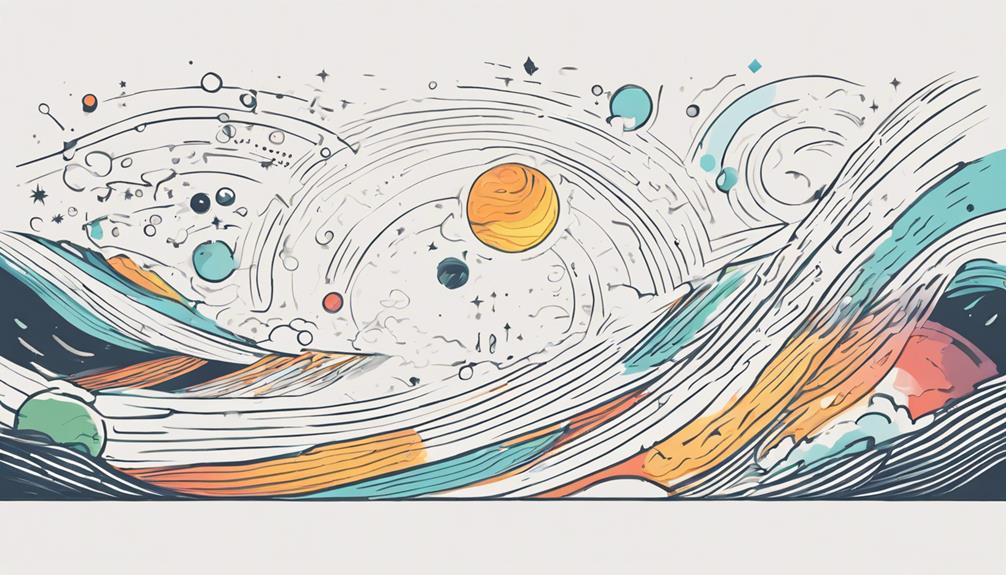
The vibrant colors of the aurora borealis are a result of complex interactions between charged particles from the Sun and gases in Earth's atmosphere. Oxygen atoms emit green light and can produce red hues at higher altitudes, while nitrogen molecules contribute to purple, blue, or pink colors lower in the atmosphere. These colors are a direct reflection of the specific gases present in the atmosphere and their unique responses to solar particles, creating the awe-inspiring auroral displays observed in the polar regions.
Color Formation Process
Charged particles interacting with gases in Earth's atmosphere create the distinctive colors seen in the Northern Lights phenomenon. This interaction results in the formation of various hues through specific processes involving atoms and molecules. The colors of the auroras are a result of excitation and emission processes occurring at different altitudes in the atmosphere. The specific chemical composition of the gases in Earth's atmosphere plays a crucial role in determining the colors observed in the auroras.
- Oxygen atoms at lower altitudes create the green hue in auroras.
- Nitrogen can produce purple, blue, or pink colors.
- The scarlet red in the aurora comes from high-altitude oxygen reacting with solar particles during the display.
Interaction With Particles
Interacting with solar particles, different types of gas particles in Earth's atmosphere are responsible for producing the diverse array of colors observed in auroras. These interactions occur when charged particles from the sun are funneled towards the Earth's magnetic field. Atmospheric gases such as oxygen and nitrogen become energized as they collide with these particles. Oxygen atoms at lower altitudes primarily emit green and red auroras, while nitrogen produces blue, purple, and pink hues. Scarlet red auroras, indicative of intense solar activity, result from high-altitude oxygen collisions. The excitation of atoms and molecules during these interactions leads to the unique colors of auroras, with variations based on altitude and the specific atmospheric gases involved.
Atmospheric Composition Effects
Within the Earth's atmosphere, the interplay of various gases and solar particles results in the captivating array of colors observed in the phenomenon known as the northern lights. The atmospheric composition plays a crucial role in determining the colors of the aurora borealis:
- Oxygen in Earth's atmosphere produces green auroral colors when excited by solar particles.
- Nitrogen can create purple, blue, or pink hues in the aurora borealis.
- High-altitude oxygen interacting with solar particles can result in scarlet red auroral colors.
The specific chemical composition of Earth's atmosphere influences the colors seen in the northern lights by causing the excitation of atoms and molecules. This interaction, influenced by the magnetic field and solar activity, leads to the stunning visual display witnessed in the night sky.
Earth's Atmospheric Insights

Revealing details about Earth's upper atmosphere, auroras provide valuable insights into the dynamics of our planet's atmospheric composition and interactions with space. Auroras, also known as the Northern and Southern Lights, occur when charged particles from the sun interact with the Earth's magnetic field, causing stunning light displays near the poles. By studying these phenomena, scientists gain crucial knowledge about Earth's upper atmosphere, space physics, and the impact of solar activity on our planet.
| Keyword | Insights | Importance |
|---|---|---|
| Magnetic Field | Auroras indicate planets with magnetic fields | Understanding planetary dynamics |
| Auroral Movements | Variations in auroral movements provide data on space weather | Predicting space conditions |
| Atmospheres | Auroras differ on planets due to diverse atmospheres | Comparing planetary atmospheric effects |
This information not only enhances our understanding of Earth but also aids in the protection of technology in space by predicting and mitigating the effects of solar storms and space weather. Additionally, studying auroras on other planets can provide valuable comparisons and insights into the broader field of space science.
Auroras on Other Planets
Auroras on other planets present unique phenomena that offer insights into the diverse interactions between solar particles and planetary atmospheres. Planets like Jupiter, Saturn, Uranus, and Neptune showcase aurorae due to their atmospheres and magnetic fields, while Mars displays them differently due to the absence of a global magnetic field. By studying aurorae on various planets in our solar system, scientists can deepen their understanding of these extraterrestrial light displays.
Alien Auroras Explained
Astronomical observations on various planets within our solar system have revealed distinctive auroral displays driven by the interaction of their atmospheres and magnetic fields with solar activity. These phenomena highlight the fascinating ways in which different planetary conditions can produce unique aurorae. Some key points to consider include:
- Planets like Jupiter, Saturn, Uranus, and Neptune exhibit aurorae due to their atmospheres and magnetic fields.
- Mars displays aurorae differently as it lacks a global magnetic field.
- Solar flares can influence the occurrence of aurorae on Earth and other planets.
The variations in aurorae on different planets underscore the complex interplay between solar influences, atmospheric compositions, and magnetic field configurations across our celestial neighbors.
Extraterrestrial Light Displays
The exploration of extraterrestrial light displays on other planets offers a compelling glimpse into the intricate relationship between planetary atmospheres, magnetic fields, and solar influences. Planets such as Jupiter, Saturn, Uranus, and Neptune exhibit auroras due to their distinct atmospheric compositions and magnetic field interactions. In contrast, Mars displays auroras differently due to the absence of a global magnetic field, leading to unique auroral patterns. Scientists have captured images of aurorae on various planets, highlighting the diverse characteristics of these extraterrestrial phenomena. Solar activity and solar flares play a crucial role in influencing the occurrence and intensity of auroras not only on Earth but also on other planets, underscoring the complex interactions between solar winds and planetary atmospheres in our solar system.
Solar Activity Impact
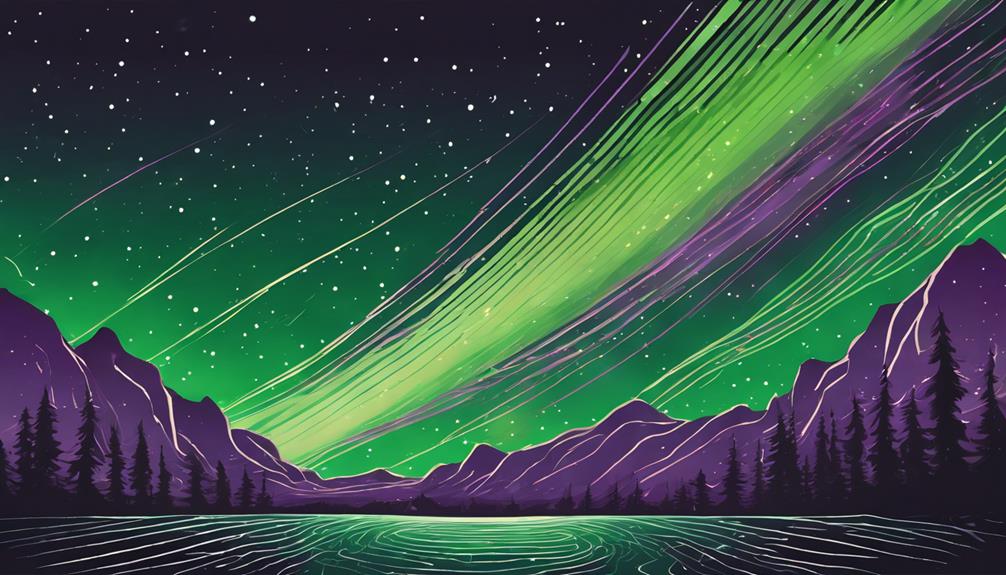
Solar activity profoundly influences the luminosity and detectability of the Northern Lights, particularly during periods of heightened solar storms. Understanding the dynamics of solar activity and its impact on auroras is crucial for predicting the visibility and behavior of these captivating light displays. Key points to consider include:
- The 11-year solar cycle plays a significant role in modulating the intensity of the Northern Lights, with the upcoming solar maximum for cycle 25 expected between early 2024 and late 2025.
- Solar physicists predict that the solar maximum will occur between late 2023 and early 2025, providing a favorable timeframe for observing spectacular auroral displays in the next 4-5 years.
- Solar emissions, such as solar flares and coronal mass ejections, contribute to the complex interaction between solar particles and the Earth's magnetic field, leading to the mesmerizing phenomenon of the Northern Lights.
Viewing Locations
Given the significance of optimal viewing conditions for observing the Northern Lights, understanding prime locations where these mesmerizing light displays can be witnessed becomes paramount. The Northern Lights, also known as aurora borealis, are commonly visible within latitudes of 60-75 degrees near the North Pole. The activity of the Northern Lights is not consistent, as the auroral oval constantly shifts due to changes in the Earth's magnetic field. To experience the best sightings, one should be in locations with dark skies, away from city lights. Some of the best places to witness the Northern Lights include parts of Canada, Norway, Sweden, Finland, Alaska, Russia, and Iceland. Northern Scandinavia and Iceland offer accessible spots for viewing these natural phenomena without the interference of artificial light pollution. Below is a table highlighting some of the prime viewing locations for the Northern Lights:
| Location | Latitude Range | Notable Features |
|---|---|---|
| Canada | 60-75° N | Dark skies |
| Norway | 60-75° N | Accessible viewing |
| Sweden | 60-75° N | Minimal light pollution |
Optimal Time for Sightings

When is the most favorable time to witness the Northern Lights in all their splendor? The optimal time for sightings of the Northern Lights is between late August to mid-April when the skies are clear, dark, and stable. During the winter months, from November to February, the auroras are more frequent due to longer evenings and favorable weather conditions. The strongest displays of the Northern Lights are typically visible between 9 p.m. and 2 a.m., with prime viewing occurring around 11 p.m. to midnight.
- The best time for Northern Lights sightings is between late August to mid-April.
- Winter months, specifically November to February, offer more frequent aurora displays.
- The optimal viewing hours are between 9 p.m. and 2 a.m., with peak visibility around 11 p.m. to midnight.
Northern Vs. Southern Lights
Auroras in the Earth's hemispheres, known as the Northern Lights and Southern Lights, are mesmerizing natural light displays resulting from interactions between solar particles and the planet's magnetic field. The Northern Lights (aurora borealis) grace the skies of the northern hemisphere, while the Southern Lights (aurora australis) illuminate the southern hemisphere. These stunning phenomena occur near the poles where solar particles collide with the Earth's magnetic field, creating a luminous spectacle.
| Northern Lights (Aurora Borealis) | Southern Lights (Aurora Australis) | |
|---|---|---|
| Hemisphere | Northern Hemisphere | Southern Hemisphere |
| Visibility | More common due to larger landmass | Equally spectacular but often over remote regions like Antarctica |
| Colors & Patterns | Slightly different due to atmospheric composition and magnetic fields | Slightly different due to atmospheric composition and magnetic fields |
| Influencing Factors | Solar activity and geomagnetic storms | Solar activity and geomagnetic storms |
The colors and patterns of the auroras vary between the two hemispheres due to distinct atmospheric conditions and magnetic field configurations. Despite these differences, both the Northern and Southern Lights share similarities in behavior and characteristics, with their visibility dependent on solar activity and geomagnetic disturbances.
Celestial Auroras

The study of celestial auroras offers valuable insights into the interaction between solar particles and Earth's magnetic field, shedding light on the dynamic processes shaping our planet's upper atmosphere.
- Magnetic Field Interaction: Celestial auroras, such as the Northern Lights, occur when charged particles from the solar wind collide with Earth's magnetic field, creating stunning light displays near the poles.
- Solar Influence: These phenomena are a result of the sun's activity, where solar particles interact with Earth's magnetosphere, leading to the energization of particles in the upper atmosphere.
- Upper Atmosphere Dynamics: Understanding celestial auroras helps scientists grasp the intricacies of Earth's upper atmosphere, providing crucial data on how solar energy impacts our planet's magnetic field and atmospheric composition.
Through the study of celestial auroras, researchers gain a deeper comprehension of the intricate relationship between the solar system, Earth's magnetic field, and the phenomena that manifest as the mesmerizing Northern Lights.
Historical Significance
Have the celestial displays of the Northern Lights left a lasting imprint on historical narratives and cultural interpretations throughout the ages? The aurora borealis, also known as the Northern Lights, has intrigued and inspired civilizations since ancient times. Various cultures have woven legends around these mesmerizing lights, often attributing them to supernatural entities or mystical forces. Observations of the auroras date back centuries, with the term 'aurora borealis' being coined in 1621 by Pierre Gassendi and Galileo Galilei.
| Historical Significance | Magnetic Field | Solar Sunspot Activity |
|---|---|---|
| Ancient cultures believed auroras were spirits dancing in the sky. | Auroras are caused by interactions between the solar wind and Earth's magnetic field. | Solar sunspot activity influences the frequency and intensity of auroras. |
| Legends often depicted the lights as messages from gods or ancestors. | Earth's magnetic field channels charged particles towards the poles, creating the light show. | Sunspot cycles impact the occurrence of auroras, with peaks every eleven years. |
| The Northern Lights were seen as omens of war or prosperity in some societies. | Changes in Earth's magnetic field strength can affect the visibility and extent of auroras. | Solar flares and coronal mass ejections can enhance auroral displays during periods of high solar activity. |
The historical significance of the aurora borealis lies not only in its breathtaking beauty but also in its role in shaping cultural beliefs and scientific understanding.
Photography Tips
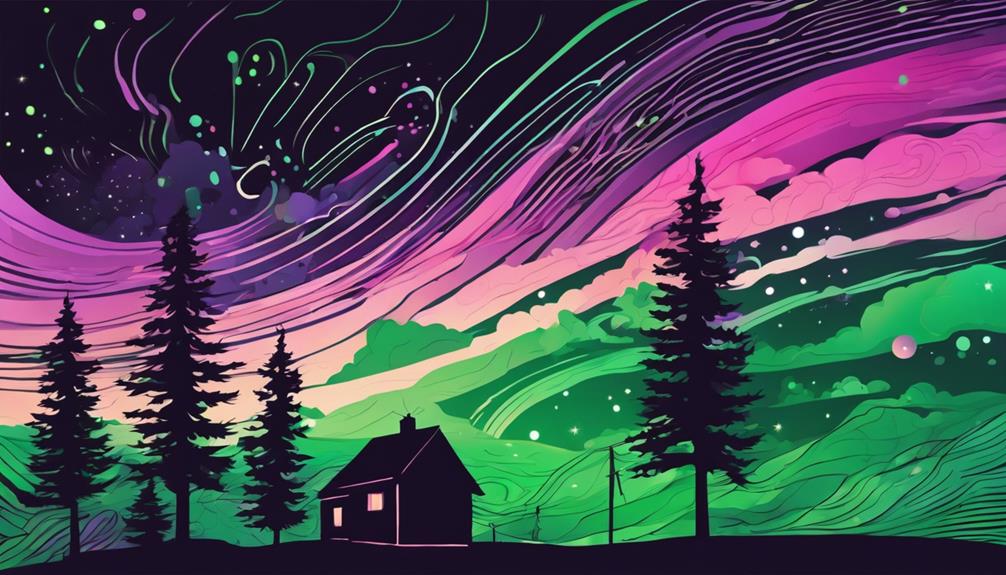
Photography enthusiasts seeking to capture the ethereal beauty of the Northern Lights can enhance their images by employing specific techniques tailored to showcase the mesmerizing dance of light in the night sky. When delving into aurora photography, here are some key tips to consider:
- Use a wide-angle lens to capture the expansive beauty of the auroras in your photographs.
- Set a longer exposure time to capture the movement and intricacies of the dancing lights.
- Consider using a tripod to ensure sharp, steady shots, especially in low-light conditions.
Additionally, opt for a low ISO setting to reduce noise and maintain clarity in your aurora photographs. Experimenting with different white balance settings can also help enhance the colors and tones of the northern lights in your images. By implementing these techniques, photographers can elevate their aurora photography to truly capture the awe-inspiring nature of the Northern Lights.
Frequently Asked Questions
What Are the Northern Lights and Why Do They Happen?
The science behind the aurora borealis, a spectacular natural phenomenon, involves interactions between solar winds and Earth's magnetic field. When charged particles from the sun collide with our atmosphere's atoms, they produce the vibrant light display known as the Northern Lights. These stunning displays occur due to specific atmospheric conditions, leading to the mesmerizing visual spectacle observed primarily at higher latitudes near the poles and sometimes even closer to the equator.
How Often Do the Northern Lights Appear?
The frequency patterns of the Northern Lights appearing are influenced by solar activity levels. These captivating natural phenomena are more likely to be observed during the winter months, especially on clear, dark nights with high geomagnetic activity. Historically, sightings of the Northern Lights have been documented across various cultures, holding significant cultural and aesthetic importance. To increase the chances of viewing this spectacle, it is advisable to monitor solar activity and aim for equinox periods for peak activity.
Where Can You See the Northern Lights in the Us?
For optimal viewing of the Northern Lights in the US, prime locations include Fairbanks, Alaska, and parts of the Upper Midwest. To enhance the experience, seek dark skies away from city lights, especially in rural areas. The best times for sightings are during fall, winter, and early spring. Pay attention to geomagnetic activity and solar flares, as they impact visibility. Consider joining Northern Lights tours for expert guidance and photography tips.
What Are the Northern Lights in the Bible?
In examining the Northern Lights within a Biblical context, scholars often explore the symbolism attributed to celestial wonders. While the phenomenon itself is not explicitly mentioned in scripture, some interpretations link these lights to concepts of divine light and spiritual significance. Given the lack of direct references, interpretations of the Northern Lights in the Bible tend to draw on broader themes of awe-inspiring celestial events and potential religious symbolism.
Conclusion
In conclusion, the Northern Lights, or aurora borealis, are a fascinating natural phenomenon caused by the interaction of charged particles from the sun with Earth's magnetic field. These mesmerizing lights can appear in various colors, including green, red, and blue, creating a stunning visual display in the night sky. It is estimated that over 30 million people travel to see the Northern Lights each year, highlighting the widespread appeal and captivating nature of this celestial event.
